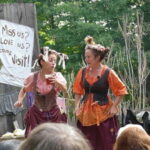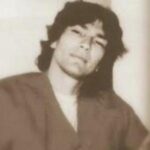The economy of California grew at a phenomenal rate during the days of the 1849 Gold Rush. Much of this growth was made possible by the laissez-faire economic policies of Governor Richard Barnes Mason.
Prices rose dramatically as more people found gold and gold became widely circulated on the market. Seeing that customers would afford it, merchants raised their fees on all sorts of commodities, from real estate to food to transportation. A miner in California may have made about six to ten times as much as his eastern counterpart, but he also had to pay about that many times more for his upkeep.
The following concrete illustration of this trend is useful: a plot of San Francisco real estate that cost $16 in 1847, sold for $45,000 just 18 months later. Imagine investing in real estate during that time period.
The city of San Francisco grew from an isolated village to a thriving city in the five or so years of the Gold Rush. Its population rose from 1000 in 1848 to 35000 in 1850. This contributed dramatically to California’s admission to the Union as a state in 1850. 30 new houses and 2 new murders came about every day. Theaters and newspapers were built and prospered, and eventually only London would have more newspapers than San Francisco. Wages rose with the general standard of living, and great economic expansion and demand for jobs made employment readily available.
The California agricultural boom was another significant economic result of the Gold Rush. Many of the forty-niners and later immigrants contributed to the growing demand for food. Initially, this was satisfied by imports from merchants as far away as Chile or as nearby as Oregon. However, gradually the capacity was developed to grow the food in California itself. Machines were imported into the country to equip an efficient farming industry, and eventually wheat was exported from California to other parts of the U.S.
This phenomenal economic growth was made possible by Governor Richard Barnes Mason’s laissez-faire approach to the economy. Mason recalled of his administration: “I resolved not to interfere, but permit all to work freely, unless broils and crimes should call for interference.
During the military period, when California’s future within the United States was still uncertain, as it was not yet a state, and governments changed with great frequency, no political factions could emerge to attempt to regulate and restrict the economy. The courts were based on the Anglo-Saxon model, which stressed property rights and the rights of the accused, though occasional acts of “vigilante justice” did occur. The government was highly limited and mainly acted as a second line of defense against crime. People fended for themselves mostly, and did surprisingly well. Unlike the cities, in the mining camps, crime rates were extremely low, lower than even in the relatively peaceful Eastern cities, mainly because almost every miner owned a gun. The principle of “more guns, less crime” was clearly demonstrated there.
Sources Used
Chevez, Ken. Part Three: State’s Latinos Lost in the Rush. 1/18/98. Sacramento Bee. October 2003 http://www.calgoldrush.com/part3/03mexicans.html
Discovery Of Gold By John A. Sutter. 2003. Virtual Museum Of The City Of San Fransisco. October 2003 http://www.sfmuseum.org/hist2/gold.html
Discovery Of Gold Report Of Colonell Mason. 2003. Virtual Museum Of The City Of San Fransisco. October 2003 http://www.sfmuseum.net/hist6/masonrpt.html
Gen. William Tecumseh Sherman. 2003. Virtual Museum Of The City Of San Fransisco. October 2003 http://www.sfmuseum.net/bio/sherman.html
Gold Fever Discovery. 1998. Oakland Museum of California. October 2003
http://www.museumca.org/goldrush/fever05.html
Gold Fever Entertainment. 1998. Oakland Museum of California. October 2003
http://www.museumca.org/goldrush/fever18.html
Gold Rush And Anti-Chinese Race Hatred. 2003. Virtual Museum Of The City Of San Fransisco. October 2003 http://www.sfmuseum.net/hist6/chinhate.html
Gold Rush: Gold Country. 2003. Idaho State University.
October 2003 http://www.isu.edu/~trinmich/goldcountry.html
Hoge, Patrick. Part Three: Justice Wasn’t Pretty- But It Was Quick. 1/18/98. Sacramento Bee. October 2003 http://www.calgoldrush.com/part3/03justice.html
Lieutenant Ulysses S. Grant And The Gold Rush. 2003. Virtual Museum Of The City Of San Fransisco. October 2003 http://www.sfmuseum.net/hist6/shermgold.html
Magagnini, Steven. Part Three: Chinese Transformed
Gold Mountain. 1/18/98. Sacramento Bee. October 2003
http://www.calgoldrush.com/part3/03asians.html
Magagnini, Steven. Part Three: Fortune Smiled on Many Black Miners. 1/18/98. Sacramento Bee. October 2003 http://www.calgoldrush.com/part3/03blacks.html
Magagnini, Steven. Part Three: Indian’s Misfortune Was Stamped In Gold. 1/18/98. Sacramento Bee. October 2003 http://www.calgoldrush.com/part3/03native.html
Perkins, Kathryn Doré. Part Three: ‘Real Women’ Who Defied Stereotype. 1/18/98. Sacramento Bee. October 2003 http://www.calgoldrush.com/part3/03women.html
The Gold Rush: Collision Of Cultures. 2003. PBS. October 2003 http://www.pbs.org/goldrush/collision.html
The Gold Rush: Journey. 2003. PBS. October 2003 http://www.pbs.org/goldrush/journey.html
William T. Sherman And The Gold Rush. 2003. Virtual Museum Of The City Of San Fransisco. October 2003 http://www.sfmuseum.net/hist6/shermgold.html
America: Gone West. Cooke, Alistair. BBC/Time-Life Television, 1973.
French Cartoon. 2003. Oakland Museum of California. October 2003 http://www.museumca.org/goldrush/curriculum/4g/42103011.html


